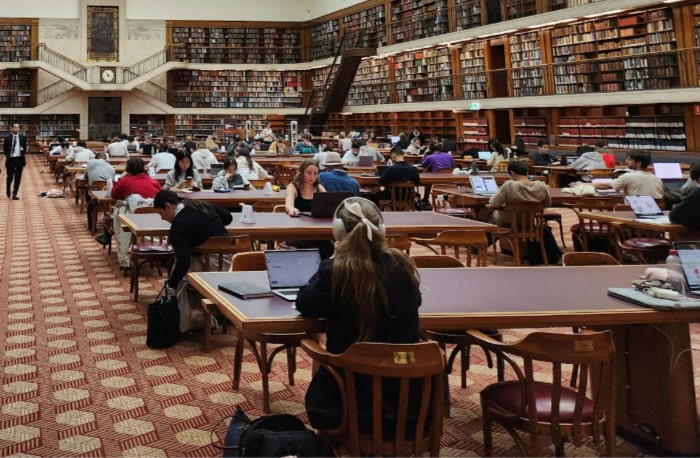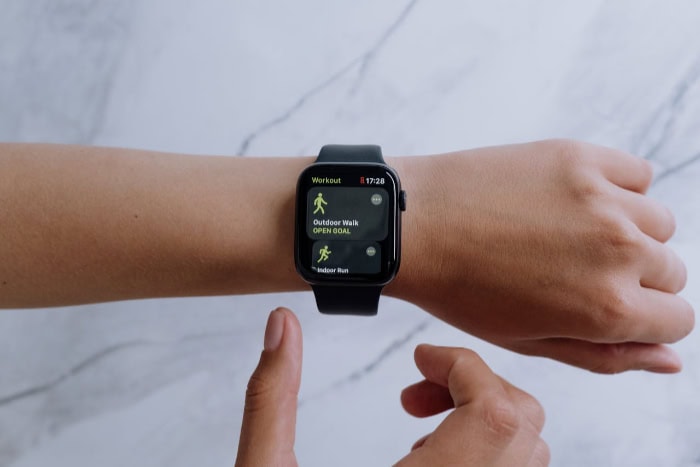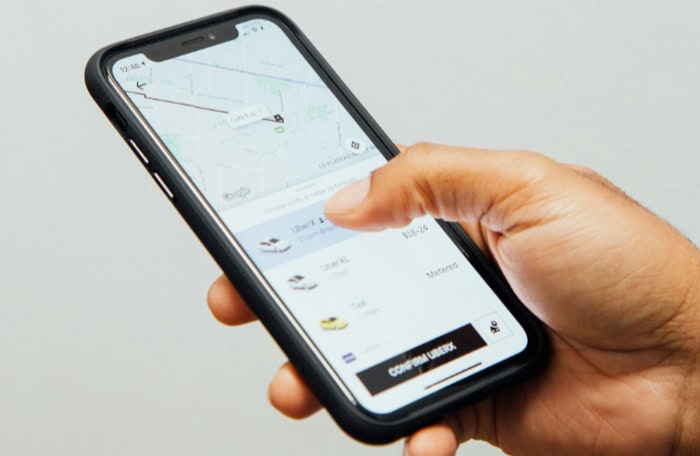How Technology Changed Our Lives: Everyday Tech Impacts

Technology's profound influence on modern society has reshaped almost every aspect of human existence. From morning alarms on smartphones to evening video calls with loved ones across continents, our daily routines now intertwine seamlessly with digital innovations.
These transformations extend far beyond mere convenience – they have fundamentally altered how we communicate, learn, work, and live.
Revolutionizing Communication
Modern communication has undergone a dramatic transformation through technological advancement, creating new ways for people to connect, share, and build relationships across global boundaries. The shift from traditional communication methods to digital platforms has fundamentally changed how we express ourselves, maintain relationships, and conduct business in the 21st century.
Instant Connectivity
Smartphones have become our constant companions, putting powerful communication tools in our pockets. These devices, combined with high-speed internet and sophisticated apps, enable us to send messages, share photos, and make video calls instantly to anyone worldwide.
Social media platforms like Instagram, Facebook, and Twitter have created vast networks where information spreads within seconds, connecting millions of users through shared interests, experiences, and ideas.
The rise of messaging apps has made communication more casual and frequent. Applications like WhatsApp, Telegram, and WeChat have introduced features such as voice messages, group chats, and file sharing, making it easier to stay in touch with family, friends, and colleagues around the clock.
Impact on Relationships
Technology has created new dynamics in how we form and maintain relationships. Virtual connections have expanded our social circles beyond geographical limitations, allowing us to build meaningful relationships with people we might never meet in person.
Professional networking platforms like LinkedIn have transformed how we approach career development and business relationships.
However, this digital connection has also introduced challenges. Face-to-face interactions have decreased, potentially affecting our ability to read non-verbal cues and develop deep, meaningful connections.
Many people struggle with “phubbing” – the habit of browsing phones during social interactions, which can strain relationships and reduce the quality of in-person conversations.
Emergence of New Platforms
Video conferencing platforms have revolutionized both personal and professional communication. Tools like Zoom, Microsoft Teams, and Google Meet have become essential for remote work, online education, and maintaining long-distance relationships.
These platforms offer features like screen sharing, virtual backgrounds, and breakout rooms, making virtual meetings more engaging and productive.
Virtual reality (VR) and augmented reality (AR) are pushing communication boundaries even further. These technologies create immersive environments where people can interact as if they're in the same physical space.
Virtual meeting rooms, social VR platforms, and collaborative workspaces in VR are introducing new ways to connect and work together.
Collaborative tools have also transformed how teams work together. Platforms like Slack, Asana, and Microsoft Teams combine chat functions with project management capabilities, file sharing, and integration with other productivity tools.
These platforms create digital workspaces where teams can communicate, coordinate, and complete projects efficiently, regardless of their physical location.
Transforming Education

Technology has reshaped the educational landscape, breaking down traditional barriers and creating new opportunities for learning. The shift from conventional classrooms to digital platforms has opened up unprecedented possibilities for students and educators alike, making quality education more accessible and adaptable to individual needs.
Access to Knowledge
Digital technology has eliminated many physical and geographical barriers to education. Massive Open Online Courses (MOOCs) from platforms like Coursera, edX, and Khan Academy now offer high-quality educational content to anyone with an internet connection.
Students can access lectures from top universities, learn from expert instructors, and pursue certificates or degrees from the comfort of their homes.
Digital libraries and educational databases have transformed research and learning. Students no longer need to rely solely on physical books or local resources.
Instead, they can access vast collections of academic journals, research papers, and educational materials through online databases. This wealth of information allows learners to explore subjects in greater depth and breadth than ever before.
Interactive learning platforms have made education more engaging and dynamic. Virtual laboratories, simulation software, and educational games provide hands-on learning experiences that were previously impossible or too expensive to implement widely.
These tools allow students to experiment, make mistakes, and learn in safe, controlled environments.
Personalized Learning
Artificial intelligence has introduced sophisticated ways to customize education for individual learners. AI-powered platforms can analyze student performance, identify learning gaps, and adjust content difficulty in real-time.
This adaptive learning technology ensures that each student progresses at their optimal pace, receiving extra support in challenging areas while advancing quickly through familiar material.
Learning management systems now offer detailed analytics about student engagement and progress. Teachers can track individual performance, identify struggling students early, and provide targeted intervention.
These insights help educators make data-driven decisions about their teaching methods and curriculum adjustments.
Virtual tutoring and AI-powered teaching assistants provide round-the-clock support to students. These tools can answer questions, explain concepts, and provide practice exercises tailored to each student's learning style and needs.
This personalized attention helps students stay motivated and overcome learning obstacles more effectively.
Challenges in Digital Education
The transition to digital learning has highlighted significant societal inequalities. The digital divide remains a substantial barrier, with many students lacking reliable internet access or necessary devices.
This gap in technological access creates disparities in educational opportunities, particularly affecting students from lower-income communities and rural areas.
Screen fatigue has emerged as a significant concern in digital education. Extended periods of screen time can lead to physical discomfort, decreased attention spans, and potential impacts on mental health.
Educators and students must find ways to balance digital learning with offline activities and breaks.
Technical difficulties and varying levels of digital literacy can disrupt the learning process. Both students and teachers need ongoing support and training to effectively use educational technology.
Additionally, the quality of online educational content varies widely, making it crucial for institutions to carefully evaluate and select appropriate digital resources.
Social development and interaction challenges have also surfaced with increased online learning. The reduced face-to-face interaction can affect students' social skills, collaborative abilities, and emotional development.
Educational institutions must find ways to foster meaningful peer interactions and maintain a sense of community in virtual learning environments.
Enhancing Healthcare

Technology has transformed healthcare delivery, making medical services more accessible, efficient, and precise than ever before. Modern innovations have created new ways to diagnose, treat, and monitor health conditions, while improving communication between healthcare providers and patients.
Telemedicine and Remote Care
Virtual healthcare has redefined medical accessibility, bringing professional medical advice directly to patients' homes. Through secure video consultations, patients can discuss symptoms, receive prescriptions, and get follow-up care without traveling to medical facilities.
This advancement has proven particularly valuable for people in rural areas, those with mobility challenges, and individuals seeking mental health support.
Wearable devices have revolutionized preventive healthcare and monitoring. Smartwatches and fitness trackers now measure vital signs, sleep patterns, and physical activity levels continuously.
These devices alert users to potential health issues before they become serious, empowering people to take control of their wellness. Some advanced wearables can detect irregular heart rhythms, monitor blood oxygen levels, and even predict potential health emergencies.
Technological Advancements in Diagnostics
Artificial intelligence has dramatically improved medical diagnosis accuracy and speed. Machine learning algorithms can analyze medical images, identifying potential abnormalities in X-rays, MRIs, and CT scans with remarkable precision.
These tools support healthcare professionals in detecting conditions earlier, leading to more effective treatment plans.
Robotic surgery systems have enhanced surgical precision and reduced recovery times. Surgeons can now perform complex procedures through tiny incisions, using robotic arms equipped with high-definition cameras and precise instruments.
This technology allows for more accurate movements and better visualization during operations, resulting in better outcomes for patients.
Advanced imaging technologies provide unprecedented views inside the human body. 3D printing technology creates detailed models of organs for surgical planning, while augmented reality systems help surgeons visualize critical structures during procedures.
These innovations have made complex surgeries safer and more successful.
Improving Patient Outcomes
Electronic Health Records (EHRs) have transformed healthcare documentation and coordination. Digital records allow healthcare providers to access complete patient histories instantly, reducing medical errors and improving care coordination between different specialists.
These systems include automatic alerts for drug interactions, allergies, and overdue preventive care.
Data analytics tools process vast amounts of medical information to identify trends and predict health risks. Healthcare providers can spot patterns in population health, track disease outbreaks, and develop more effective treatment protocols.
This capability helps hospitals allocate resources more efficiently and implement preventive measures where needed.
Mobile health apps have empowered patients to participate actively in their healthcare. These apps help people track medications, monitor chronic conditions, and communicate with healthcare providers.
Patient portals provide secure access to test results, appointment scheduling, and direct messaging with medical staff, creating a more engaged and informed patient population.
The integration of artificial intelligence with patient data has enabled personalized medicine approaches. By analyzing genetic information, lifestyle factors, and medical histories, healthcare providers can tailor treatments to individual patients, improving effectiveness and reducing side effects.
This precision medicine approach represents a significant advancement in healthcare delivery and patient care.
Redefining Work and Productivity

Technology has fundamentally altered how we work, where we work, and what we consider productive. The traditional nine-to-five office environment has transformed into a flexible, technology-driven workspace that spans geographical boundaries and time zones.
This shift has created new opportunities while presenting unique challenges for both employers and employees.
Automation and AI
Artificial intelligence and automation have become powerful forces in reshaping workplace operations. Machine learning algorithms now handle tasks that once required significant human intervention, from data analysis to customer service interactions.
Smart software can process vast amounts of information, identify patterns, and make predictions faster and more accurately than humans.
Robotics has transformed manufacturing and logistics, with automated systems handling everything from assembly lines to warehouse management. These technologies have improved precision, reduced errors, and increased production speeds.
In offices, AI-powered tools assist with scheduling, document processing, and complex calculations, allowing employees to focus on more creative and strategic work.
The integration of these technologies has created new roles and responsibilities. Professionals now work alongside AI systems, developing skills to manage and optimize these tools.
While some routine jobs have been automated, new positions have emerged in areas such as AI maintenance, data analysis, and robot programming.
Remote Work Revolution
The ability to work from anywhere has become a reality through advanced technology. Cloud computing enables teams to access necessary files and applications from any location, while project management platforms keep work organized and trackable.
Video conferencing tools create virtual meeting spaces that maintain team connectivity and collaboration.
Digital collaboration tools have evolved to support various work styles and needs. Real-time document editing, virtual whiteboards, and team chat platforms facilitate seamless cooperation among distributed teams.
These tools have made it possible for organizations to maintain productivity while offering employees greater flexibility in their work arrangements.
The shift to remote work has also influenced company culture and management practices. Organizations have developed new ways to build team spirit, measure performance, and maintain security in virtual environments.
Virtual team-building activities, online training programs, and digital wellness initiatives have become common features of remote work culture.
Economic Implications
Technological advancement in the workplace has created significant economic ripples. While some traditional jobs have disappeared due to automation, new industries and roles have emerged.
The demand for digital skills has surged, creating opportunities in fields like cybersecurity, data science, and digital marketing.
The need for continuous learning and adaptation has become crucial for career sustainability. Workers must regularly update their skills to remain competitive in a technology-driven job market.
Companies invest heavily in training programs to help employees adapt to new tools and systems, while individuals seek online certifications and digital skills training.
The gig economy has expanded through digital platforms, creating new ways for people to earn income. Freelance marketplaces, ride-sharing apps, and remote work platforms have made it easier for individuals to find work opportunities beyond traditional employment models.
This shift has led to more flexible work arrangements but also raised questions about job security and worker benefits.
The economic landscape continues to evolve with technological progress. Companies must balance automation benefits with workforce impact, while governments and educational institutions work to prepare people for future job markets.
The challenge lies in harnessing technology's potential while ensuring economic opportunities remain accessible to all workforce segments.
Shaping Daily Life and Society

Technology has become deeply woven into the fabric of modern society, transforming how we live, interact, and conduct our daily activities. From the moment we wake up to when we go to sleep, digital tools and smart devices influence our behaviors, choices, and relationships in profound ways.
Convenience in Everyday Life
Smart devices have revolutionized household management and daily tasks. Voice assistants like Alexa and Google Home control lighting, temperature, and security systems with simple voice commands.
Smart refrigerators track groceries and suggest recipes, while robotic vacuum cleaners maintain clean floors automatically. These innovations save time and effort, allowing people to focus on more meaningful activities.
Online shopping has transformed how we acquire goods and services. Mobile apps and websites offer 24/7 access to products worldwide, with personalized recommendations and quick delivery options.
Digital payment systems and mobile wallets have simplified transactions, while subscription services automatically deliver regular necessities to our doorsteps. Savvy shoppers now use price tracking tools, coupon extensions, and seasonal sales to make the most of their online purchases, transforming casual browsing into strategic buying that saves both time and money.
Navigation apps have changed how we move through the world. Real-time traffic updates, public transit tracking, and location-based services help us find the fastest routes and discover new places.
Restaurant recommendation apps, parking assistance, and ride-sharing services make city living more manageable and efficient.
Social Behavior Changes
Digital technology has altered social interactions and cultural norms significantly. Social media platforms have created new ways to maintain relationships, share experiences, and express opinions.
People now cultivate online personas, share life updates instantly, and participate in virtual communities based on shared interests.
Entertainment consumption has shifted dramatically. Streaming services provide personalized content recommendations, while gaming platforms offer immersive social experiences.
Binge-watching has replaced weekly television schedules, and mobile games have created new forms of casual entertainment that fill brief moments throughout the day.
Cultural practices have adapted to digital influences. Virtual birthday celebrations, online wedding ceremonies, and digital gift-giving have become common.
Dating apps have changed how people meet potential partners, while social media influences fashion trends, food choices, and lifestyle decisions.
Privacy Concerns
The convenience of connected technology comes with significant privacy challenges. Personal data collection occurs constantly through smartphones, smart devices, and online activities.
Companies gather information about shopping habits, location history, and social connections to create detailed user profiles.
Data breaches and cyber attacks pose serious risks to personal information. Financial details, medical records, and private communications can be compromised, leading to identity theft and financial fraud.
Social media oversharing can expose personal information to unauthorized users, while facial recognition and surveillance technologies raise questions about public privacy.
Digital footprints have become permanent records of our lives. Information shared online can persist indefinitely, affecting future job prospects, relationships, and social standing.
Children growing up with social media face unique challenges, as their entire lives may be documented online before they can make informed choices about privacy.
The balance between technological convenience and personal privacy remains a critical challenge. Users must weigh the benefits of connected services against potential privacy risks, while companies face pressure to implement stronger data protection measures.
Government regulations and privacy laws continue to evolve in response to these challenges, though they often struggle to keep pace with rapid technological advancement.
Conclusion
Technology has fundamentally reshaped human existence, creating unprecedented opportunities while introducing new challenges. Modern communication tools have connected people across continents, while educational platforms have made learning accessible to millions worldwide.
Digital innovations continue to transform healthcare delivery, making medical services more efficient and available. Work environments have evolved beyond traditional boundaries, offering flexibility and new career paths through automation and remote collaboration.
Looking forward, society must balance technological advancement with human needs and values. While smart devices and digital services enhance daily convenience, maintaining personal privacy and meaningful human connections remains essential.
Success in this technology-driven era requires adaptability, digital literacy, and thoughtful consideration of how we integrate these tools into our lives.


